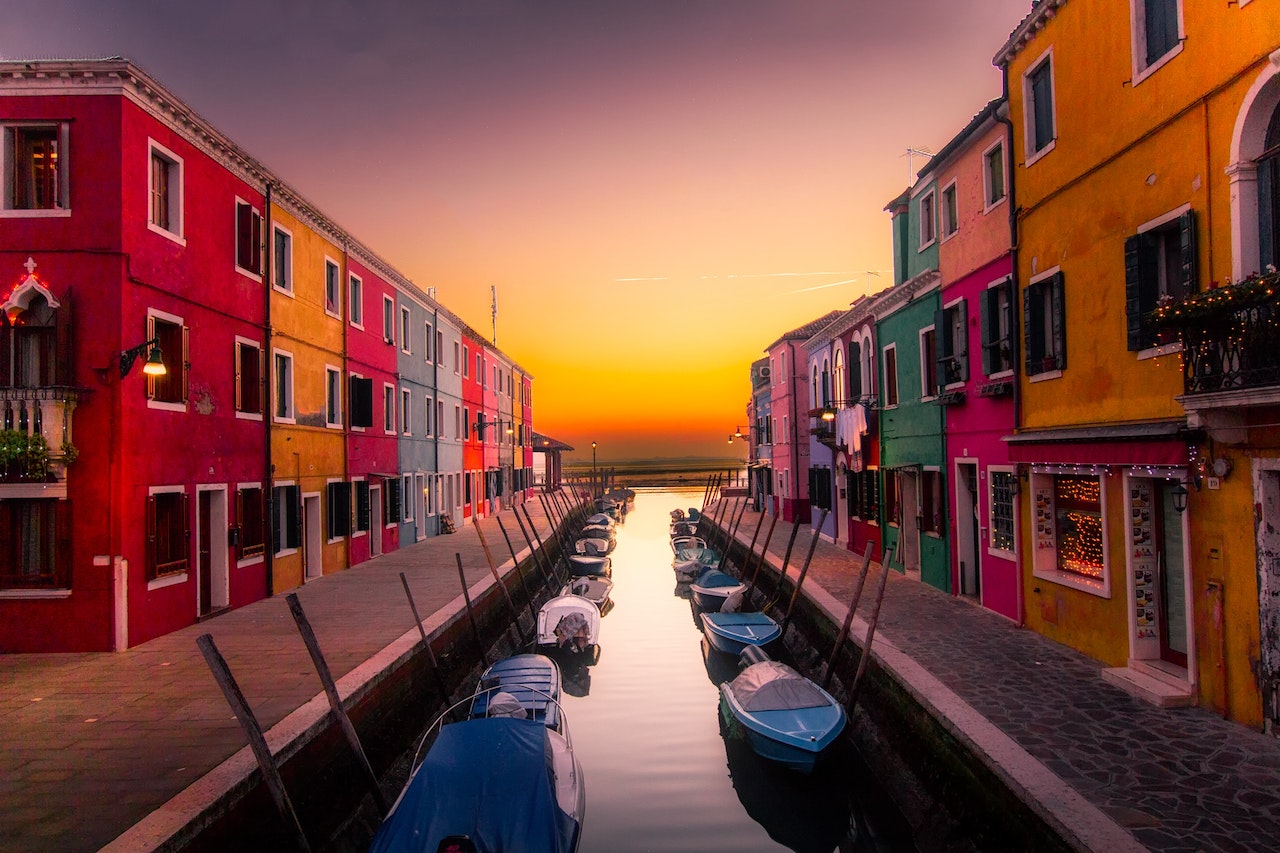The Impact Of Urbanization On Architectural Design And Planning - A Modern Solution For Urbanization Challenges
The impact of urbanization on architectural design and planning has led to the development of new design strategies and technologies to address the challenges of urbanization. This phenomenon has been on the rise since the 18th century and has become more prominent in the 21st century due to a range of factors, including industrialization, globalization, and advancements in technology.
Author:George EvansMar 20, 202324.4K Shares872.1K Views

The impact of urbanization on architectural design and planninghas led to the development of new design strategies and technologies to address the challenges of urbanization.
This phenomenon has been on the rise since the 18th century and has become more prominent in the 21st century due to a range of factors, including industrialization, globalization, and advancements in technology.
As cities grow, so does the demand for architectural design and planning that accommodates the needs of urban dwellers.
In this article, we will explore the impact of urbanization on architectural design and planning, examining how architects and planners have responded to the challenges posed by urbanization.
The Impact Of Urbanization On Architectural Design And Planning
Urbanization has significantly influenced architectural design and planning in many ways. In the past, urbanization was associated with the rise of skyscrapers and other tall buildings as architects tried to accommodate a growing population in limited space.
However, in recent years, the emphasis has shifted toward creating more sustainable, eco-friendly, and livable urban environments.
Architects and planners are now designing buildings that blend in with the natural surroundings, incorporate renewable energy sources, and prioritize the health and well-being of the occupants.
Sustainable Architecture
Sustainable architectureis a concept that has gained prominence in recent years due to concerns about the environment and climate change.
Sustainable architecture focuses on reducing the negative impact of buildings on the environment by using renewable energy sources, reducing waste, and conserving natural resources.
This type of architecture is becoming increasingly popular in urban areas as people become more aware of the need to protect the planet.
Urban Planning
Urban planningis another area that has been greatly impacted by urbanization. As cities grow, there is a need for effective planning to ensure that they remain livable and functional.
Urban planners are responsible for designing the layout of cities, including the placement of buildings, roads, and public spaces. They must also take into account factors such as transportation, housing, and public services when designing urban areas.
Challenges Posed By Urbanization
Despite the benefits of urbanization, it also poses significant challenges to architects and planners. One of the most significant challenges is the need to accommodate a growing population in limited space.
As cities become more crowded, architects and planners must find innovative ways to make the most of the available space.
Vertical Architecture
One solution to the challenge of limited space is vertical architecture. This type of architecture involves building tall structures that take up less ground space while providing more living and working space.
The most prominent example of this is the skyscraper, which has become a common feature of modern urban landscapes.
Mixed-use Developments
Mixed-use developments are another solution to the challenge of limited space. These developments incorporate a mix of residential, commercial, and public spaces in a single building or complex.
This approach allows for more efficient use of space while also providing a range of amenities and services to residents.
Technological Advancements
Technological advancements have also had a significant impact on architectural design and planning in urban areas. Advances in technology have made it possible to design and construct buildings that are more efficient, sustainable, and functional.
Building Information Modeling (BIM)
Building information modeling (BIM) is one technology that has revolutionized the field of architecture. BIM is a digital tool that allows architects and planners to create three-dimensional models of buildings and structures.
This technology has made it easier to design and construct buildings that are efficient, cost-effective, and sustainable.
Smart Buildings
Smart buildings are another example of how technology has impacted architectural design and planning. These buildings are designed to be energy-efficient and sustainable, with features such as automated lighting and heating systems, as well as renewable energy sources like solar panels.
Cultural And Social Influences
Cultural and social influences also play a significant role in architectural design and planning in urban areas. Architects and planners must take into account the cultural and social needs of the people who will be using the buildings and spaces they design.
Cultural Influences
Cultural influences can include factors such as regional architecture, historical significance, and cultural traditions. For example, a building in a traditional neighborhood in a city may need to incorporate local design elements to fit in with the surrounding area.
Social Influences
Social influences can include factors such as accessibility, inclusivity, and community engagement. Architects and planners must design buildings and public spaces that are accessible to people with disabilities, and that promote inclusivity and community engagement.

Impacts of Urbanization| AP Environmental science| Khan Academy
The Future Of Urban Architecture And Planning
The future of urban architecture and planning will continue to be shaped by urbanization, technological advancements, and cultural and social influences. However, some emerging trends are likely to have a significant impact on the field in the coming years.
Biophilic Design
Biophilic designis a concept that has gained popularity in recent years. It involves designing buildings and public spaces that incorporate elements of nature, such as plants, natural light, and water features. This approach is believed to have a positive impact on the health and well-being of building occupants.
Prefabricated Construction
Prefabricated construction is another emerging trend in urban architecture and planning. This approach involves constructing buildings off-site and then assembling them on-site.
This approach is more efficient and cost-effective than traditional construction methods and can help to reduce the impact of construction on the environment.
Adaptive Reuse
Adaptive reuseinvolves repurposing existing buildings for new uses. This approach is becoming increasingly popular in urban areas, as it allows for the preservation of historic buildings and can help to reduce waste and the environmental impact of construction.
People Also Ask
What Is The Purpose Of Zoning Regulations In Urban Planning?
Zoning regulations are used to designate different areas of a city for specific types of development, such as residential, commercial, or industrial.
What Is The Role Of Technology In Architectural Design And Planning?
Technology plays a significant role in architectural design and planning, from computer-aided design (CAD) software to building information modeling (BIM) systems.
What Is The Difference Between A Building Code And A Zoning Code?
A building code is a set of regulations that governs the construction and safety of buildings, while a zoning code regulates land use and development in a specific area.
What Is The Role Of Public Participation In Urban Planning?
Public participation is important in urban planning to ensure that the needs and opinions of the community are taken into account when making decisions about development and design.
Conclusion
The impact of urbanization on architectural design and planning is a topic of ongoing research and discussion among architects, urban planners, and policymakers around the world.
Architects and planners have had to respond to the challenges posed by urbanization, including the need to accommodate a growing population in limited space, the need for sustainable and eco-friendly design, and the need to incorporate technological advancements and cultural and social influences.
As urbanization continues to shape the world we live in, the future of urban architecture and planning will continue to evolve, with emerging trends such as biophilic design, prefabricated construction, and adaptive reuse likely to have a significant impact in the years to come.

George Evans
Author
George Anderson, an exceptional architectural designer, envisions and brings to life structures that transcend the realm of imagination. With an unwavering passion for design and an innate eye for detail, George seamlessly blends form and function, creating immersive spaces that inspire awe.
Driven by a deep appreciation for the interplay of space, light, and materials, George's innovative approach redefines the possibilities of architectural design. His visionary compositions leave an indelible mark, evoking a sense of wonder and transforming the built environment.
George Anderson's transformative designs and unwavering dedication continue to shape the architectural landscape, pushing the boundaries of what is possible and inspiring generations to come.
Latest Articles
Popular Articles
